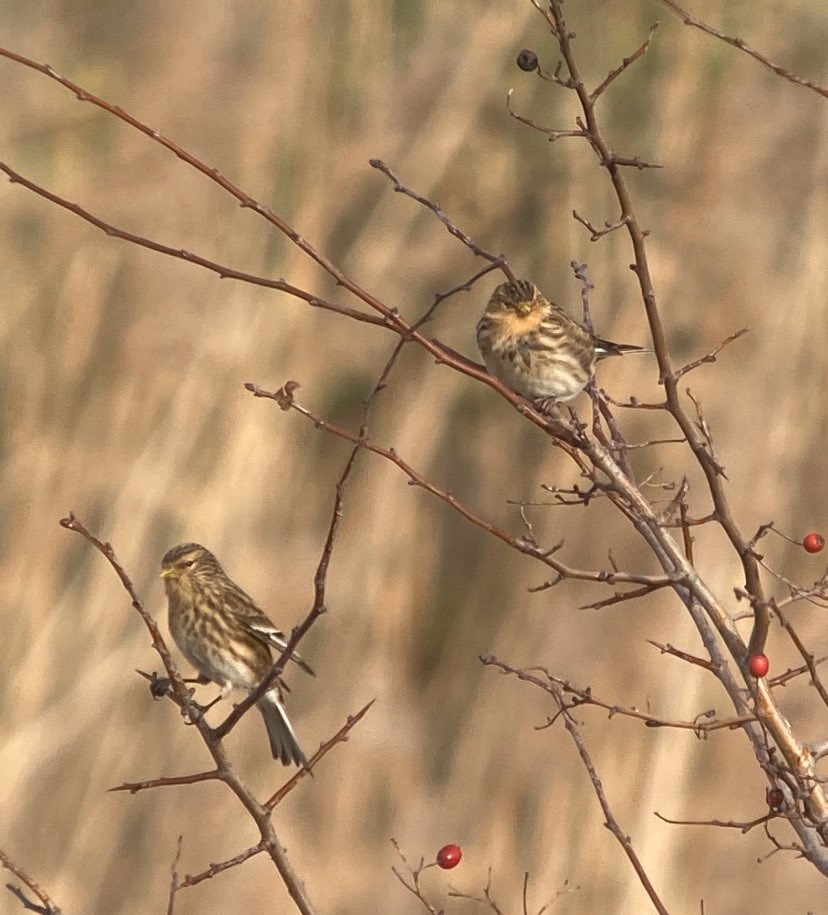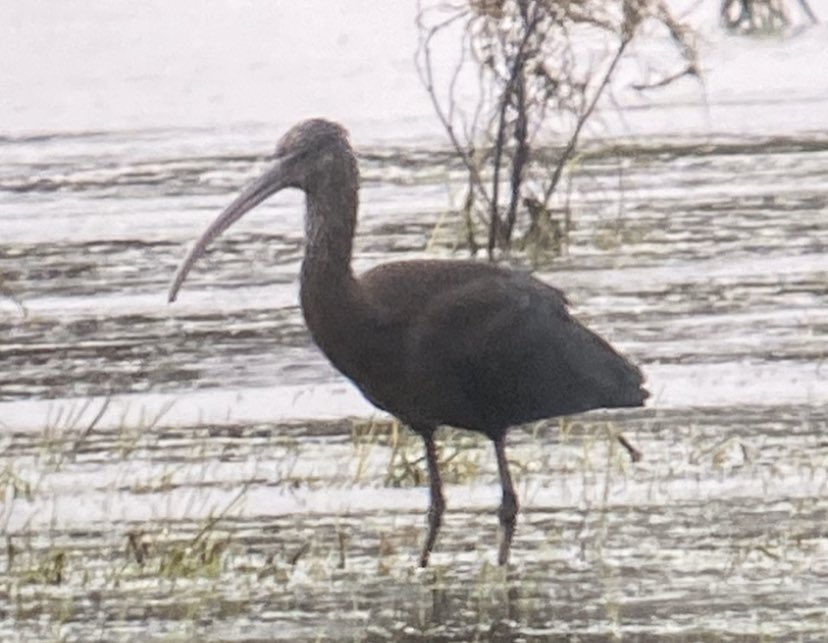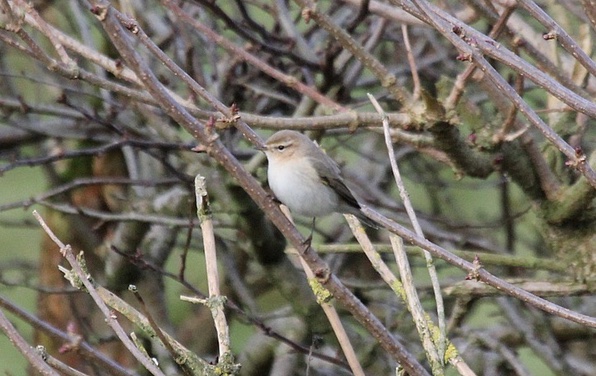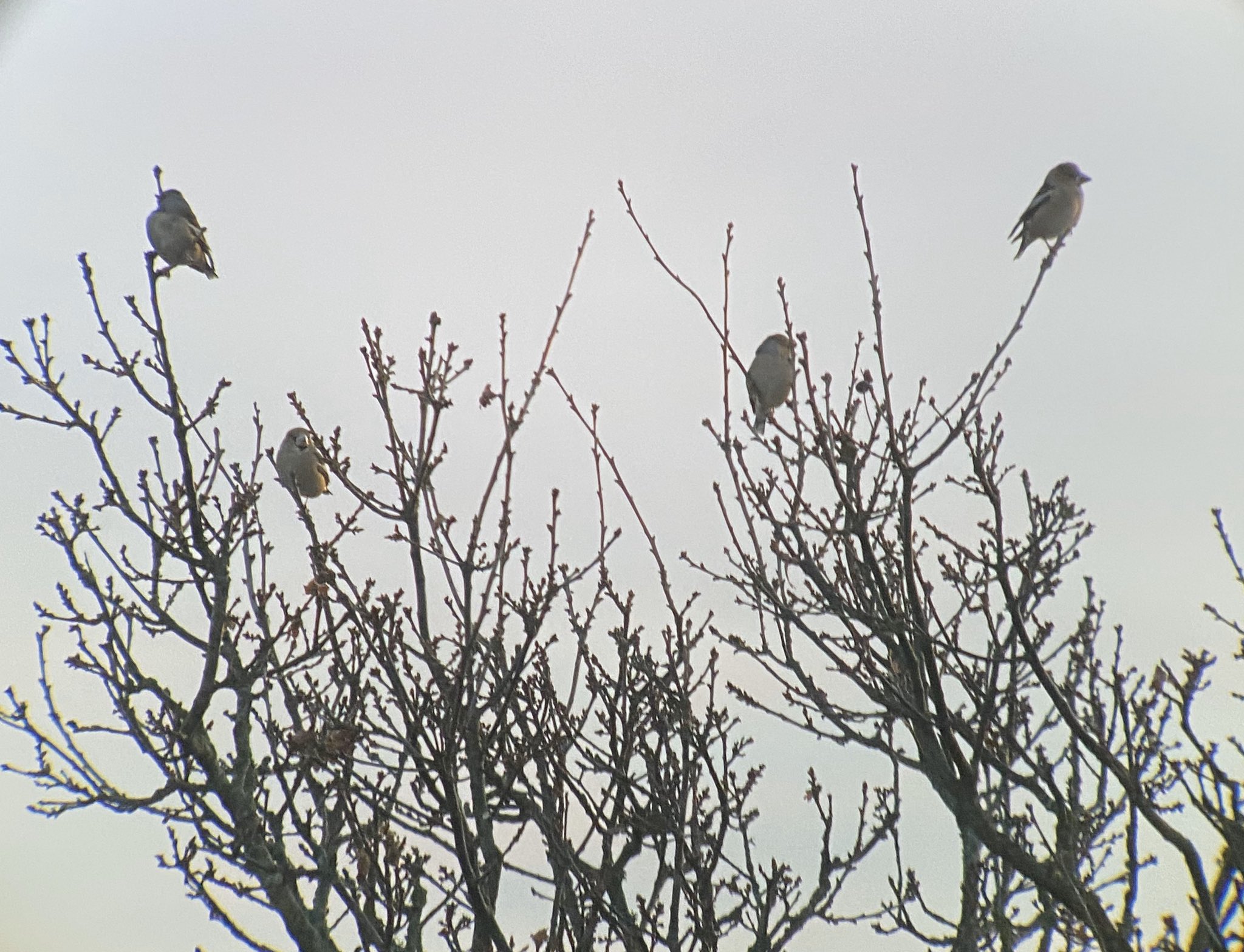We enjoyed nice accommodation overnight at the Manor Farm Guesthouse in Wells-next-the-Sea which had comfortable beds which were most welcome after what had been a tiring first day. Before breakfast we headed out for a short walk around the town where we saw a Sparrowhawk over the harbour near the old granary whilst the only other bird of note was a singing Goldcrest in the Catholic Church of Our Lady churchyard. When we got back to our accommodation we were served a nice cooked breakfast which set us up for the day nicely.
 Our first stop was a flying visit to Lady Ann's Drive at Holkham where we found nine White-fronted Geese on the western side of the road accompanied by a few Pink-footed Geese. After getting some nice views of these we headed off to RSPB Titchwell and over the A149 on our way there we had more Pink-footed Geese as well as a Red Kite. We arrived at Titchwell and it was still pretty quiet (not many cars) and we headed straight to the beach. Offshore we found seven Long-tailed Duck of which at least five were stunning males also associating with them were three Goldeneye (2 drake and 1 female). After watching the sea for a while we also added a single Great Northern Diver which flew east as well as a Red-throated Diver which went the same way. Along the tideline were several Bar-tailed Godwit and a couple of Sanderling. We headed back onto the reserve where we had a scan of the scrape/s where the highlights were ten Avocet, a flock of Knot and lots of Golden Plover. A quick trip around the back of the reserve added a female Stonechat, three Siskin and a female Reeve's Muntjac.
Our first stop was a flying visit to Lady Ann's Drive at Holkham where we found nine White-fronted Geese on the western side of the road accompanied by a few Pink-footed Geese. After getting some nice views of these we headed off to RSPB Titchwell and over the A149 on our way there we had more Pink-footed Geese as well as a Red Kite. We arrived at Titchwell and it was still pretty quiet (not many cars) and we headed straight to the beach. Offshore we found seven Long-tailed Duck of which at least five were stunning males also associating with them were three Goldeneye (2 drake and 1 female). After watching the sea for a while we also added a single Great Northern Diver which flew east as well as a Red-throated Diver which went the same way. Along the tideline were several Bar-tailed Godwit and a couple of Sanderling. We headed back onto the reserve where we had a scan of the scrape/s where the highlights were ten Avocet, a flock of Knot and lots of Golden Plover. A quick trip around the back of the reserve added a female Stonechat, three Siskin and a female Reeve's Muntjac.
Rather than retracing our steps from the day before and going to look for the three Tundra Bean Geese at Burnham Overy and Shorelark at Holkham Gap we decided to head south towards Welney WWT. As we were approaching Welney we came across our first Whooper Swan these were a herd of 15 at Ten Mile Bank. We arrived at Welney and were greeted with c10 Tree Sparrow on the feeders around the car park, whilst out on the washes we found a Great White Egret and nine more Whooper Swan. We got very lucky with two Common Crane passing over the visitor centre, a case of being in the right place at the right time! The whole area is extremely flooded and the water levels are very high this meant that only the main hide was open. The only birds from here were a few Mallard, Tufted Duck and Pochard.
 Whilst on site at Welney I checked Birdguides to see if there was anything nearby we could go and see. Five Smew at Needingworth Quarry Lakes caught my attention but this was a site neither of us knew anything about but we thought we would give it a go anyway as it was only a 40 minute drive away. Enroute we came across 400-800 Whooper Swan, nine Bewick's Swan in an arable field near Gold Hill in Cambridgeshire and eight Kestrel. After a short while we arrived at Needingworth Quarry Lakes and were greeted with a tiny car park in a very bleak location, the rain was starting to settle in and we had no idea where the birds were. It didn't have a good feel about it when we first pulled up but we put on our waterproofs and headed off down the extremely muddy path. We were very fortunate to bump into a local birder who informed us of where the Smew were and where was best to view them from. After more mud bashing we got to where he said and instantly found a drake with two redheads, we walked a bit further down the track and were thrilled to find a total of eight Smew (2 drakes and 6 female), what a fantastic way to the end what had been a brilliant weekend away! Also of note at this site was a drake Goldeneye, an adult Lesser black-backed Gull, a vocal Chiffchaff and a Great Spotted Woodpecker.
Whilst on site at Welney I checked Birdguides to see if there was anything nearby we could go and see. Five Smew at Needingworth Quarry Lakes caught my attention but this was a site neither of us knew anything about but we thought we would give it a go anyway as it was only a 40 minute drive away. Enroute we came across 400-800 Whooper Swan, nine Bewick's Swan in an arable field near Gold Hill in Cambridgeshire and eight Kestrel. After a short while we arrived at Needingworth Quarry Lakes and were greeted with a tiny car park in a very bleak location, the rain was starting to settle in and we had no idea where the birds were. It didn't have a good feel about it when we first pulled up but we put on our waterproofs and headed off down the extremely muddy path. We were very fortunate to bump into a local birder who informed us of where the Smew were and where was best to view them from. After more mud bashing we got to where he said and instantly found a drake with two redheads, we walked a bit further down the track and were thrilled to find a total of eight Smew (2 drakes and 6 female), what a fantastic way to the end what had been a brilliant weekend away! Also of note at this site was a drake Goldeneye, an adult Lesser black-backed Gull, a vocal Chiffchaff and a Great Spotted Woodpecker. |
| Four of the eight Smew (drake and three redhead), Needingham Quarry Lakes, Cambridgeshire |























